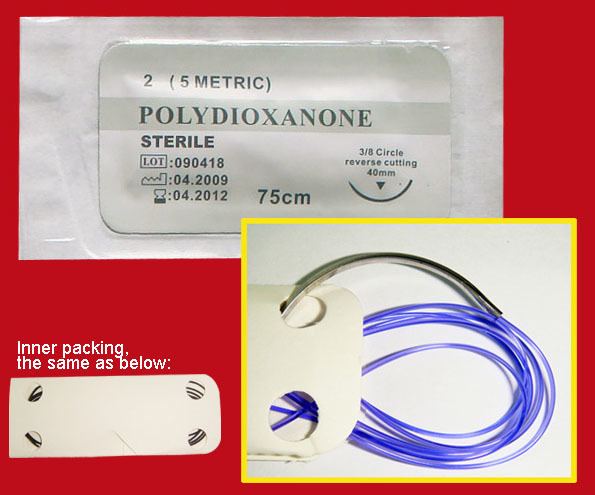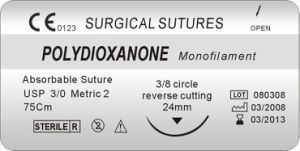 | ||
Training jbp v lift polydioxanone threads
Polydioxanone (PDO, PDS) or poly-p-dioxanone is a colorless, crystalline, biodegradable synthetic polymer.
Contents
Polydioxanone meaning
Chemistry

Chemically, polydioxanone is a polymer of multiple repeating ether-ester units. It is obtained by ring-opening polymerization of the monomer p-dioxanone. The process requires heat and an organometallic catalyst like zirconium acetylacetone or zinc L-lactate. It is characterized by a glass transition temperature in the range of −10 and 0 °C and a crystallinity of about 55%. For the production of sutures, polydioxanone is generally extruded into fibers, however care should be taken to process the polymer to the lowest possible temperature, in order to avoid its spontaneous depolymerization back to the monomer. The ether oxygen group in the backbone of the polymer chain is responsible for its flexibility.
Medical use

Polydioxanone is used for biomedical applications, particularly in the preparation of surgical sutures. Other biomedical applications include orthopedics, plastic surgery, drug delivery, cardiovascular applications, and tissue engineering.

It is degraded by hydrolysis, and the end products are mainly excreted in urine, the remainder being eliminated by digestive or exhaled as CO2. The biomaterial is completely reabsorbed in 6 months and can be seen only a minimal foreign body reaction tissue in the vicinity of the implant. Materials made of PDS can be sterilized with ethylene oxide.


